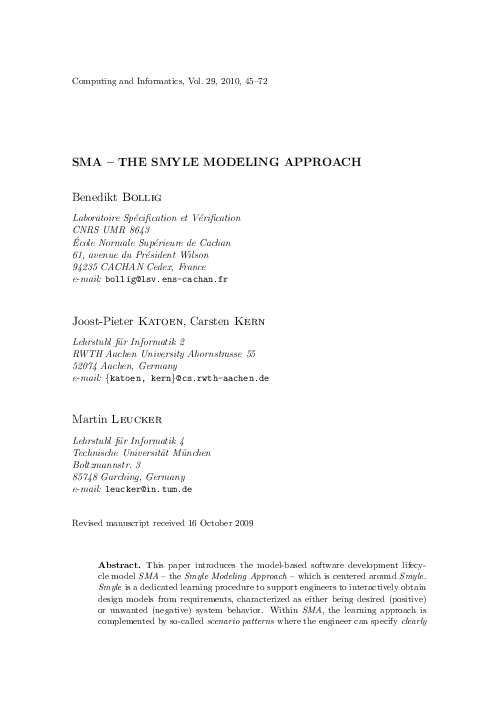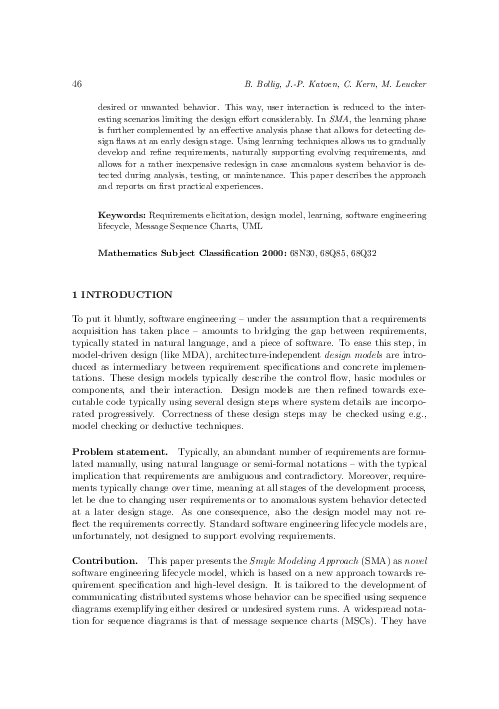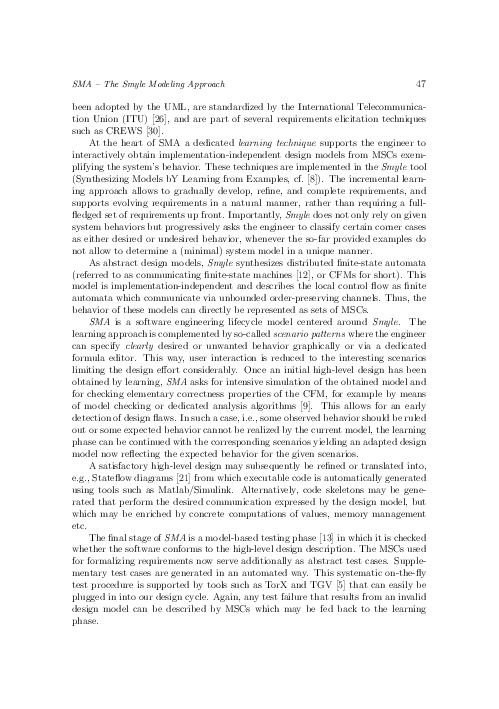SMA -- The Smyle Modeling Approach
keywords: Requirements elicitation, design model, learning, software engineering lifecycle, Message Sequence Charts, UML
This paper introduces the model-based software development lifecycle model SMA -- the Smyle Modeling Approach -- which is centered around Smyle. Smyle is a dedicated learning procedure to support engineers to interactively obtain design models from requirements, characterized as either being desired (positive) or unwanted (negative) system behavior. Within SMA, the learning approach is complemented by so-called scenario patterns where the engineer can specify clearly desired or unwanted behavior. This way, user interaction is reduced to the interesting scenarios limiting the design effort considerably. In SMA, the learning phase is further complemented by an effective analysis phase that allows for detecting design flaws at an early design stage. Using learning techniques allows us to gradually develop and refine requirements, naturally supporting evolving requirements, and allows for a rather inexpensive redesign in case anomalous system behavior is detected during analysis, testing, or maintenance. This paper describes the approach and reports on first practical experiences.
mathematics subject classification 2000: 68N30, 68Q85, 68Q32
reference: Vol. 29, 2010, No. 1, pp. 45–72


